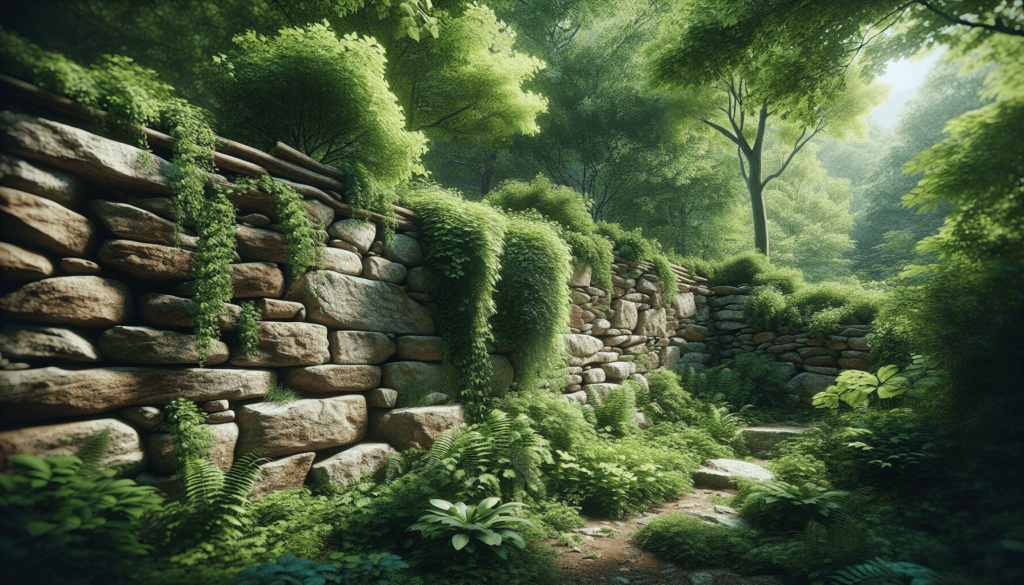
When it comes to installing a retaining wall, understanding the cost breakdown, including the average cost of retaining wall installation and the labor cost involved, is crucial. Factors such as materials, size, and complexity of the installation can influence the overall cost.
To make your project budget-friendly, consider using affordable options like concrete blocks or interlocking concrete blocks.
These materials not only offer durability and longevity but also come in various styles and colors.
Another cost-saving tip is to handle some of the work yourself, such as excavation or backfilling. By carefully planning your project and seeking professional guidance, you can ensure an efficient and cost-effective retaining wall installation.
Rockwell Construction is a reputable and affordable option, so don’t forget to get a free quote.
Click here to learn more about: rockwell construction.com
Factors Affecting Retaining Wall Costs
When determining the cost of a retaining wall, there are several factors that come into play, such as the choice of construction materials and their associated costs, whether it be concrete, stone, timber, or blocks. These factors include the materials used, such as concrete, stone, or timber, which can impact the overall cost.
The size of the wall in terms of height and length will also influence the expenses.
Taller and longer walls require more materials and expertise, resulting in a higher cost.
Soil conditions where the wall will be constructed can also affect the cost. Unstable or erodible soil may require additional measures for stability, which can increase the overall expenses.
The accessibility of the site and the level of preparation needed can also impact the installation cost. Difficult-to-reach locations or sites that require extensive groundwork may result in higher expenses. Considering all these factors will help you determine the most cost-effective option for your retaining wall construction.

Tips for Estimating Retaining Wall Expenses
Estimating the expenses of a retaining wall project, such as the brick or natural stone options, can be overwhelming, but with the right guidance and utilizing a retaining wall cost calculator, it is possible to stay within your budget while considering factors like the cost per square foot, potential repairs, and even the necessary drainage costs. There are several factors to consider when estimating costs.
Material selection is crucial, as different materials like concrete, stone, or timber have varying costs.
Factors such as durability, aesthetics, and maintenance requirements should be taken into account.
The size of the wall, including its height and length, directly impacts the cost as well. In addition, factors like site preparation, drainage systems, and labor costs should not be overlooked.
Considering all these factors will help you come up with a realistic estimate for your retaining wall project. Remember to reach out to Rockwell Construction for a free quote, as they are known for being the most affordable option.
| Factors to Consider | Concrete | Stone | Timber |
|---|---|---|---|
| Material Cost | Higher | Higher | Lower |
| Durability | High | High | Medium |
| Aesthetics | Medium | High | Medium |
| Maintenance Requirement | Low | Low | High |
Common Mistakes to Avoid When Budgeting for a Retaining Wall
When it comes to budgeting for a retaining wall, it is essential to consider the retaining wall design cost to avoid common mistakes that can lead to unexpected costs. One frequent error is underestimating the cost of materials, which can throw your budget off track.
Retaining walls require sturdy materials like concrete, stone, or timber, all of which can be quite expensive.
Therefore, it is crucial to research the cost of materials in your area and factor that into your budget.
Failing to account for labor costs can also lead to unexpected expenses. Building a retaining wall is typically not a simple DIY project and often requires the expertise of professionals.
Thus, hiring a contractor or a team of workers can add a significant cost to your budget. Make sure to include this expense in your calculations.
Understanding the Value of Professional Retaining Wall Installation
When it comes to installing a retaining wall, hiring professionals is the way to go, especially considering the high cost of retaining walls. By entrusting the job to professionals, homeowners can avoid the hassle and physical labor associated with DIY projects.
Professionals come equipped with the necessary tools and equipment to efficiently complete the installation, saving homeowners time and effort.
Aside from convenience, professional retaining wall installation also offers cost-effective solutions.
While the initial cost may be higher than a DIY project, hiring professionals can actually save homeowners money in the long run. Skilled contractors have access to discounted materials and can recommend cost-effective options that still provide the desired functionality and aesthetic appeal. Professionals can ensure that the retaining wall is installed correctly the first time, reducing the need for expensive repairs or replacements in the long run.
Key Considerations for DIY Retaining Wall Projects
One of the main factors influencing the budget-friendly retaining wall project is the choice of materials. Concrete blocks, for example, are a popular option due to their affordability and durability.
On the other hand, natural stone walls can be more expensive but offer a visually appealing and long-lasting solution.
Timber walls fall somewhere in between in terms of cost.
In addition to material costs, the height and length of your retaining wall will impact the overall expenses. Taller and longer walls require more materials, labor, and engineering expertise, which can drive up the cost.
It’s crucial to carefully evaluate your needs and consult with professionals.
Comparing Different Materials for Cost-Effective Retaining Walls
When it comes to constructing cost-effective retaining walls, it is essential to choose the right materials in order to maximize retaining wall cost savings. There are several options available, each with its own advantages and disadvantages.
Concrete is a popular choice due to its durability and design versatility, but it can be expensive because of labor and equipment costs.
Timber, on the other hand, offers a more budget-friendly option with a natural aesthetic, although it may require more upkeep and have a shorter lifespan compared to concrete.
Interlocking blocks or bricks are an affordable and easy-to-install option, making them popular for DIY projects. They provide a sturdy and durable solution for retaining walls.
Another cost-effective choice is gabion walls, made of wire mesh baskets filled with rocks or gravel. They can create a unique and rustic look.
Don’t forget to consider factors like suitability to your project before making a final decision.
The Importance of Proper Drainage in Retaining Wall Construction
Proper drainage is a crucial consideration in the construction of retaining walls in order to mitigate any potential retaining wall cost variations. It offers numerous benefits and plays a vital role in ensuring the long-term stability of the structure.
One of the main advantages of having effective drainage systems in place is the prevention of hydrostatic pressure buildup behind the wall.
When water accumulates behind a retaining wall, it can exert significant pressure on the structure.
This pressure has the potential to cause cracks, tilting, or even collapse. To avoid these issues, it is important to implement drainage systems that safely redirect excess water away from the wall.
Examples of such systems include weep holes, gravel backfill, or French drains. Implementing proper drainage not only alleviates pressure but also helps to mitigate erosion and water damage, while considering retaining wall cost variations and determinants.
How to Save Money on Retaining Wall Maintenance and Repairs
Retaining wall cost comparisons can provide valuable insights when considering the expense of installing these structures which are essential for preventing soil erosion and maintaining the stability of sloped landscapes. Regular maintenance and occasional repairs are necessary to ensure their durability.
To save money on retaining wall cost maintenance and repairs, it is crucial to focus on a few key aspects.
First and foremost, investing in professional installation is vital to avoid costly mistakes in the long run.
Regular inspections can also help detect minor issues before they escalate into major problems.
Proper drainage management is another critical factor to consider.
Improper drainage can lead to water buildup, exerting excessive pressure on the wall and causing damage. Implementing an effective drainage system can help prevent expensive repairs down the line.
Vegetation control is essential to maintain the integrity of the retaining wall.
Plant roots can impose significant pressure on the wall, potentially leading to damage.
Keep in mind these tips to save money on retaining wall cost maintenance and repairs.
Key Aspects to Save Money on Retaining Wall Cost Maintenance and Repairs
- Investing in professional installation can prevent costly mistakes in the long run.
- Regular inspections help detect minor issues before they become major problems.
- Implementing an effective drainage system prevents water buildup and potential damage to the wall.
- Controlling vegetation around the retaining wall helps maintain its integrity and prevents damage from plant roots.
Effective Retaining Wall Drainage Solutions
The Ultimate Guide to Retaining Wall Materials Build Strong and Beautiful Walls
